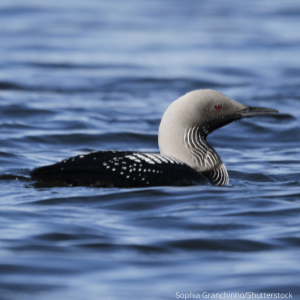Types of Loons: All Loon Species in the United States
There are five species or types of loon that can be spotted in the United States: the Red-throated Loon, Pacific Loon, Common Loon, Yellow-billed Loon, and Arctic Loon.
The otherworldly calls of loons punctuate the nighttime air in a chorus of mournful cries. However, some Indigenous cultures consider these birds to be anything but somber — for them, loons represent tranquility and renewal.
An Inuit myth, for example, tells the story of how a loon helped a young boy regain his vision. With their brilliant ruby-colored eyes, it's not hard to imagine why loons might be thought to possess extraordinary powers of vision.
Despite their majesty and magic, loons face an uncertain future due to climate change. Minnesota may even lose its state bird, the Common Loon, in the coming decades due to climate-induced landscape changes.
Loons, however, are not without human advocates. ABC and its conservation partners work throughout much of the United States to improve land management and build habitat resiliency for loons and other bird species.
Our List
For the purposes of this list, we've used data from the Cornell Lab of Ornithology's Birds of the World online database. Our list is organized taxonomically and includes all five of the world's loon species, each of which can be found in the United States.
|
|
|
|
|
How can I help loons?
We all can do our part to protect birds.
American Bird Conservancy and our Joint Venture partners have improved conservation management on 6.4 million acres of U.S. bird habitat — an area larger than the state of Maryland — over the last ten years. This is a monumental undertaking, requiring the support of many, and you can help by making a gift today.
Policies enacted by Congress and federal agencies, such as the U.S. Fish and Wildlife Service, have a huge impact on America's birds. You can help shape these rules for the better by telling lawmakers to prioritize birds, bird habitat, and bird-friendly measures. To get started, visit ABC's Action Center.
 | Kathryn Stonich teaches English for the Community College of Baltimore County and Bryant & Stratton College online. She is an avid backyard birder and advocate for pigeon and dove rescue. |





































 Red-throated Loon
Red-throated Loon Arctic Loon
Arctic Loon Pacific Loon
Pacific Loon
 Yellow-billed Loon
Yellow-billed Loon












